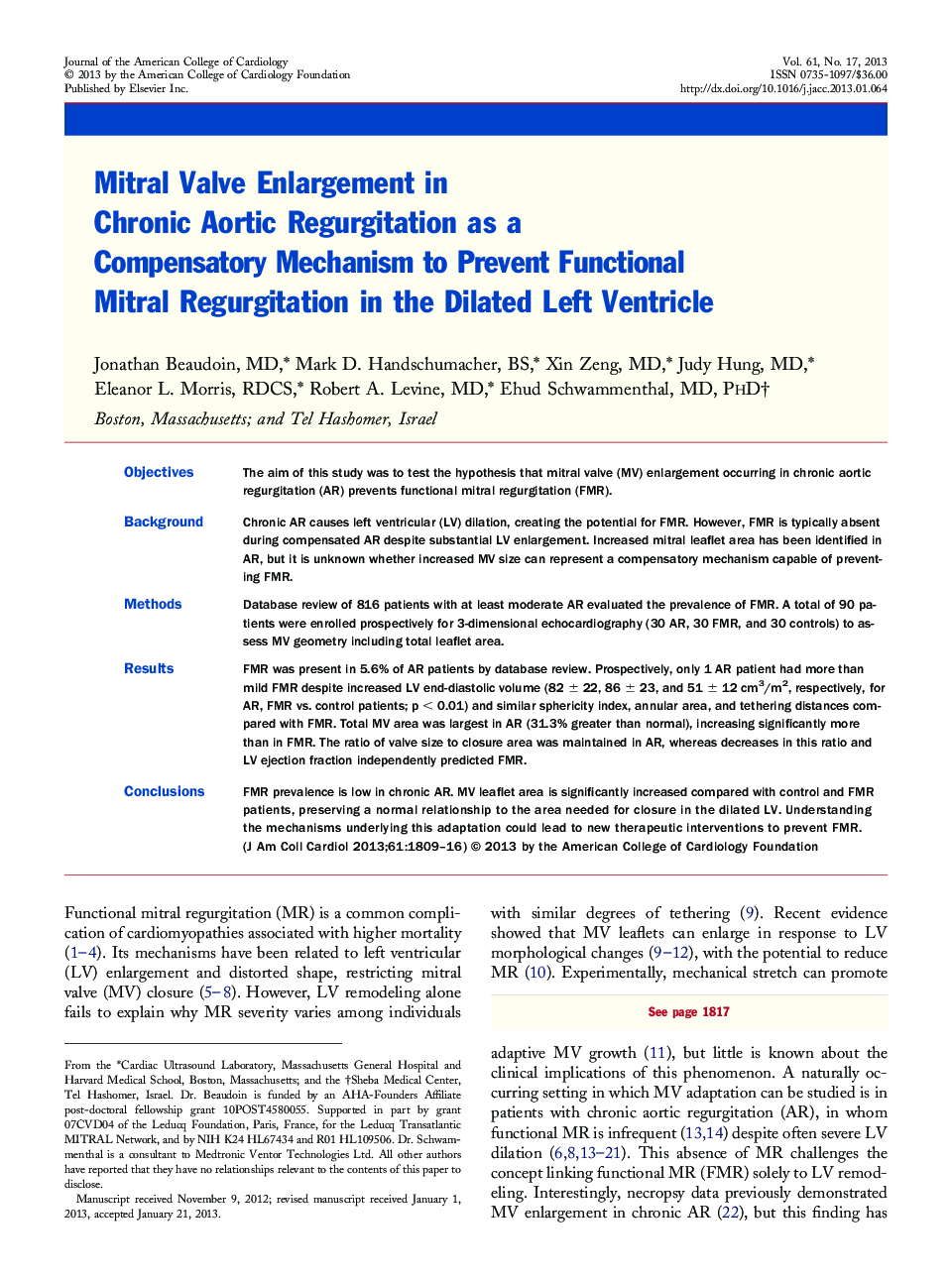| Article ID | Journal | Published Year | Pages | File Type |
|---|---|---|---|---|
| 5983195 | Journal of the American College of Cardiology | 2013 | 8 Pages |
ObjectivesThe aim of this study was to test the hypothesis that mitral valve (MV) enlargement occurring in chronic aortic regurgitation (AR) prevents functional mitral regurgitation (FMR).BackgroundChronic AR causes left ventricular (LV) dilation, creating the potential for FMR. However, FMR is typically absent during compensated AR despite substantial LV enlargement. Increased mitral leaflet area has been identified in AR, but it is unknown whether increased MV size can represent a compensatory mechanism capable of preventing FMR.MethodsDatabase review of 816 patients with at least moderate AR evaluated the prevalence of FMR. A total of 90 patients were enrolled prospectively for 3-dimensional echocardiography (30 AR, 30 FMR, and 30 controls) to assess MV geometry including total leaflet area.ResultsFMR was present in 5.6% of AR patients by database review. Prospectively, only 1 AR patient had more than mild FMR despite increased LV end-diastolic volume (82 ± 22, 86 ± 23, and 51 ± 12 cm3/m2, respectively, for AR, FMR vs. control patients; p < 0.01) and similar sphericity index, annular area, and tethering distances compared with FMR. Total MV area was largest in AR (31.3% greater than normal), increasing significantly more than in FMR. The ratio of valve size to closure area was maintained in AR, whereas decreases in this ratio and LV ejection fraction independently predicted FMR.ConclusionsFMR prevalence is low in chronic AR. MV leaflet area is significantly increased compared with control and FMR patients, preserving a normal relationship to the area needed for closure in the dilated LV. Understanding the mechanisms underlying this adaptation could lead to new therapeutic interventions to prevent FMR.
